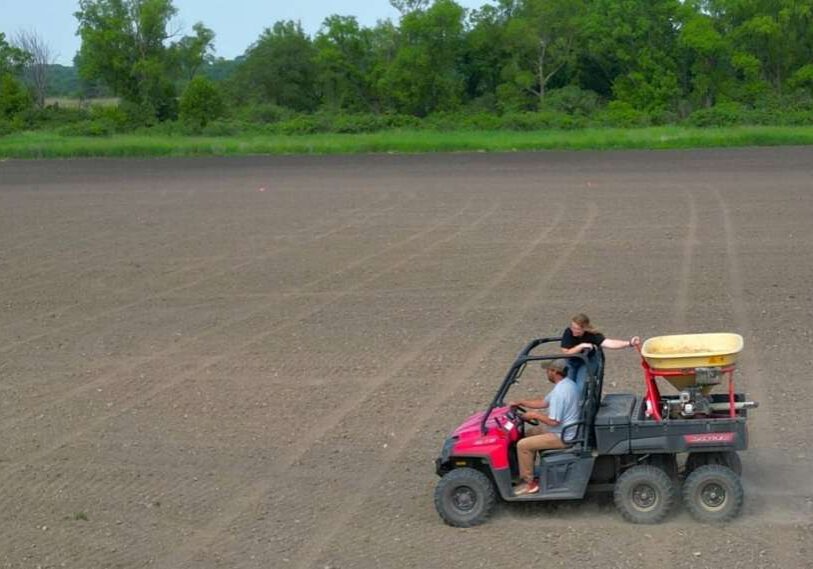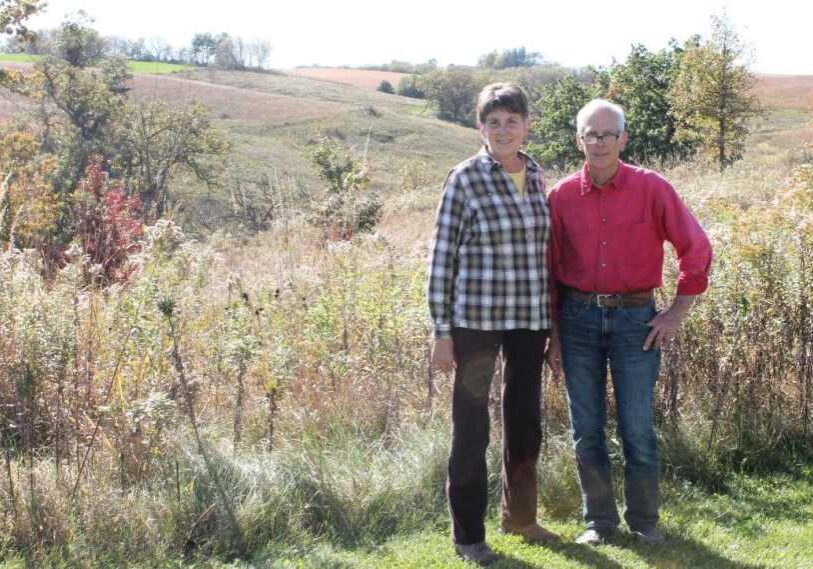Spring Migration: Things to Know About Our Region’s Mississippi Flyway

MISSISSIPPI RIVER — Spring migration is underway along the Mississippi Flyway, making the Mississippi River, its floodplain, and tributaries hotspots for waterfowl and songbirds.
The Mississippi plays a critical role guiding these birds across the country and providing them habitat to rest. Here’s what you need to know about this important flyway — and when and where to see the birds amid their long journeys.
What is the Mississippi Flyway, and which birds use it?
The Mississippi Flyway is a migration route along the Mississippi, Missouri and lower Ohio rivers that birds take each spring and fall to make their way between their breeding grounds in Canada and their winter homes in the Gulf of Mexico and Central and South America.
It’s one of four flyways in the U.S. The others are the Central Flyway, the Pacific Flyway and the Atlantic Flyway.
More than 325 bird species use the Mississippi Flyway each year — an estimated 40% of waterfowl and shorebirds in North America — including sparrows, warblers, owls, ducks, plovers, cranes, chickadees and many more. Not surprisingly, many of the songbirds, in particular, have stops along the Mississippi’s tributaries, including southeast Minnesota’s Root River valley.
Where do they come from, and where are they going?
Waterfowl typically winter in the southern and southeastern U.S., about as far south as the Gulf of Mexico, said Dale Gentry, director of conservation for Audubon’s Minnesota, Iowa and Missouri region.

A prothonotary warbler, a bright yellow songbird is named for the yellow robes worn by papal clerks in the Roman Catholic church, enjoys old forests surrounded by floodwaters. (Photo courtesy of the U.S. Fish and Wildlife Service)
When they migrate along the river, they’re headed to the Prairie Pothole region of Canada, western Minnesota and the Dakotas. Some species, including wood ducks, buffleheads and mergansers, will stay in the forested areas of Wisconsin and Minnesota to nest in tree cavities.
Many songbird species, by contrast, make much farther journeys, flying from Central and South America. They migrate at night and pay close attention to atmospheric pressure to decide when to travel, Gentry said, preferring pressure systems with no storms or clouds.
Once in the air, these birds can fly around 200 miles per night before stopping to rest and recharge for a few days.
It’s “every birder’s dream” to be in the right spot when a massive flock of colorful songbirds arrive, exhausted, to hang out for a bit, Gentry said.
Why do birds follow the Mississippi River?
Just like many of us humans have memorized landmarks that chart the route between our homes and certain familiar places, birds use the Mississippi River as a guide to help them travel south to north and vice versa, Gentry said.
Birds that migrate elsewhere use mountain ranges or the coasts as guides, but in the middle of the country, there’s no better visual marker than the Mississippi, he said.
It also comes with a valuable added bonus: reliable habitat to stop and rest in. Despite the massive changes the river floodplain has undergone as cities have developed around it, there’s still water, tributaries, and a ribbon of forest alongside it in many places that make it an attractive place to rest and refuel.
Although all species seem to appreciate it, there are some birds that are particularly attached. The prothonotary warbler, for example — a bright yellow songbird named for the yellow robes worn by papal clerks in the Roman Catholic church — enjoy big, old forests surrounded by floodwaters, Gentry said. In southeast Minnesota and southwest Wisconsin they’re abundant along the Mississippi, but birders elsewhere in the state will rarely see them.
How could climate change, habitat loss and light pollution affect birds on their journey?
The crucial habitat the flyway offers is facing a series of threats.
At Audubon, Gentry said, there’s concern about what scientists call “phenological mismatch.” In other words, birds are genetically cued to leave the south when the weather warms, and they arrive in the north when insects emerge and trees bud.
But climate change is throwing off the timing of those events.

Bufflehead ducks fly over the Mississippi River between Brownsville, Minnesota and Stoddard, Wisconsin. (Photo by Mark Hoffman, Milwaukee Journal Sentinel)
As winters and springs warm up, data is showing birds are arriving a little sooner than they were historically. The idea that the early bird gets the worm holds true here — birds want to arrive at their final destination as early as possible to claim the best breeding grounds.
The danger is that the weather could fluctuate and a spring cold snap could kill off tree buds and insects that the birds need to eat, eventually causing them to die.
The river’s floodplain forests are also struggling. Between 1891 and 1989, the upper Mississippi and Illinois rivers lost nearly half of their floodplain forest cover due to urban and agricultural land use, as well as changes to the way the water flowed after locks and dams were installed in the 1930s.
Those losses have accelerated in the last few decades, both because of climate change and land use changes. A warmer atmosphere holds more moisture, which can produce more intense rainfall. Longer-lasting floods, including a massive one in 2019 in which the river was above flood stage for more than 100 days, are killing off the trees.
Light pollution has also been a threat to birds, particularly during their migration journeys. Birds orient in part by the moon and the stars, Gentry said, making them attracted to light. Bright urban environments can draw them in, and it can be deadly: nearly 1,000 birds died one night during migration last fall when they flew into a Chicago building on the shore of Lake Michigan.
Audubon urges people to turn out all unnecessary lights during spring and fall migration, and even think about dimming necessary ones during times of peak bird traffic.

A pair of tundra swans swim near some Canada geese and ducks in Pool 8 on the Mississippi River. (Photo by Mark Hoffman, Milwaukee Journal Sentinel)
When and where is the best place to see them?
Spring migration typically lasts into mid-June. It gets underway in April as waterfowl move north, Gentry said, arriving on the river by the tens of thousands.
Songbirds begin their arrival in early to mid-May, sometimes in groups so large they can be tracked on weather radar. The best time to catch them is in the early morning, from sunrise until about 10 a.m., when they’re moving around and actively feeding.
During this time frame, there’s not really a bad spot along the upper Mississippi River-area to see a bunch of birds, Gentry said, particularly public lands.
Specific recommendations include Wyalusing State Park near Prairie du Chien, Hixon Forest and Goose Island in the La Crosse area, and most anywhere within the Upper Mississippi River National Wildlife and Fish Refuge’s designated lands which protect thousands of acres of river floodplain along both sides of the river between Wabasha, Minnesota, and the Quad Cities in Iowa and Illinois. (Ed. Note: Migrating birds also make their way up the Root River valley and its tributaries in southeast Minnesota.)
Of course, there’ll be another opportunity for bird watching when fall migration rolls around — typically the flashier of the two, Gentry said, because the birds that came in the spring have had babies, meaning almost twice as many birds make the journey back south.
But he prefers getting out in the spring. The birds are in their breeding plumage and are often singing to attract a mate.
“It brings hope, thinking about the journey those birds made,” Gentry said, “and how much they overcame to be there.”
Related Root River Current stories about the Upper Mississippi River:

This story is from the Mississippi River Basin Ag & Water Desk, an editorially independent reporting network based at the University of Missouri School of Journalism, in partnership with Report For America and the Society of Environmental Journalists with funding provided, in part, by the Walton Family Foundation.
Contributor
Madeline Heim, Mississippi River Basin Ag & Water Desk
Madeline Heim reports for the Milwaukee Journal Sentinel and the Mississippi River Basin Ag & Water Desk. She has interned at the Wisconsin Center for Investigative Journalism and reported for the Winona Daily News.






